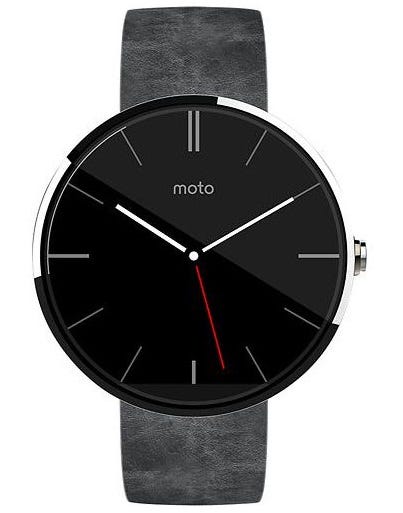Smartwatches with Higher-Bandwidth Vibration Notifications
This is an updated version of an article first published on Medium on Oct. 24, 2015.

I love my smartwatch, way more than I thought I would when I bought it, over a year ago. It’s a Moto 360, which is still better looking than the Apple watch, I think.
Why do I love it? It’s not the health monitoring. I turned that junk off as soon as I got the thing. Do not care. It’s because it separates my phone and its alerts (and temptations) from my interactions with other people.
The killer feature for smartphones is the vibration notifications. Phone in my bag or across the room? No problem, I can feel a phone call, or a text message, or a news alert, without anybody else knowing. I even downloaded an app that taps my wrist at the top of every hour, giving me the same sense of time as the dorky digital watch I had in 6th grade, but without annoying the people around me. The alerts are mostly different — apps can choose their duration and pattern — and with practice you can tell a few of them apart. It’s fantastic, and even better is the fact that I can see, dismiss, and briefly respond to alerts if necessary, by looking at my watch and interacting with it. Or, better yet, I can choose not to, but still know the type of alert to expect next time I’m not engaged in something more important.
But one key function isn’t perfect, and it highlights a limitation of having vibration notifications on your wrist. The broken UX is turn-by-turn navigation. The navigation app buzzes your wrist whenever you have to turn. But then the next action you have to perform is to look at your wrist. Maybe tolerable when walking, but inadvisable when driving, and particularly dangerous when biking. (Update: The Apple Watch gives you different patterns when you have to turn left versus right, which would be a useful, if limited, enhancement to Android Wear.)

What if you could feel what direction you have to turn next? What if you could just know when and when to turn, without having to listen to your phone, or learn complex tap patterns on your wrist?
Android Wear should support a secondary bracelet for your other wrist. No screen, just bluetooth and a buzzer. Now, you get twice as much bandwidth when apps want to communicate with you. Apps can buzz both wrists at once, or one then the other, or any other pattern. And even better, spatial apps such as navigation can guide you in the right direction, right from the start. Left buzz? Turn left now. Right buzz? Turn right. Both together? Maybe you’ve arrived!
What would it take to make this happen? Well, Google would have to make changes, I suspect. The current Vibrator API for Android Wear appears to make the strong assumption that there’s a single vibrating device. Android Wear would have to specifically support multiple, coordinated worn devices with independent vibration support, and probably would have to make additional changes to support Wear devices without a screen.
Once Wear supported these devices, though, they’d presumably be easy to manufacture, and we’d see metal smartbracelets, hipster smartbracelets made out of braided leather, and who knows, maybe smartanklets too! Speaking of anklets, a predecessor to this idea is the vibrating ankle compass, whose wearers always know which way is North. Apparently it was transformative to wearers. (Update: There’s been some efforts to sell a Smart Shoe along these lines.)
What other devices could increase your communications bandwidth? Google Glass was a failure, and having bluetooth things talk in your ear is now entirely passe. People don’t want audio or visual connections to the internet all the time, it turns out. (And even more, people don’t want you to have audio or visual connections to the internet all the time!) But the very-low-bandwidth notifications from vibrating devices may give people just enough connectivity to know what they need to know, without interrupting their interactions with the real world. Google? (And Apple, I suppose…) Get started!